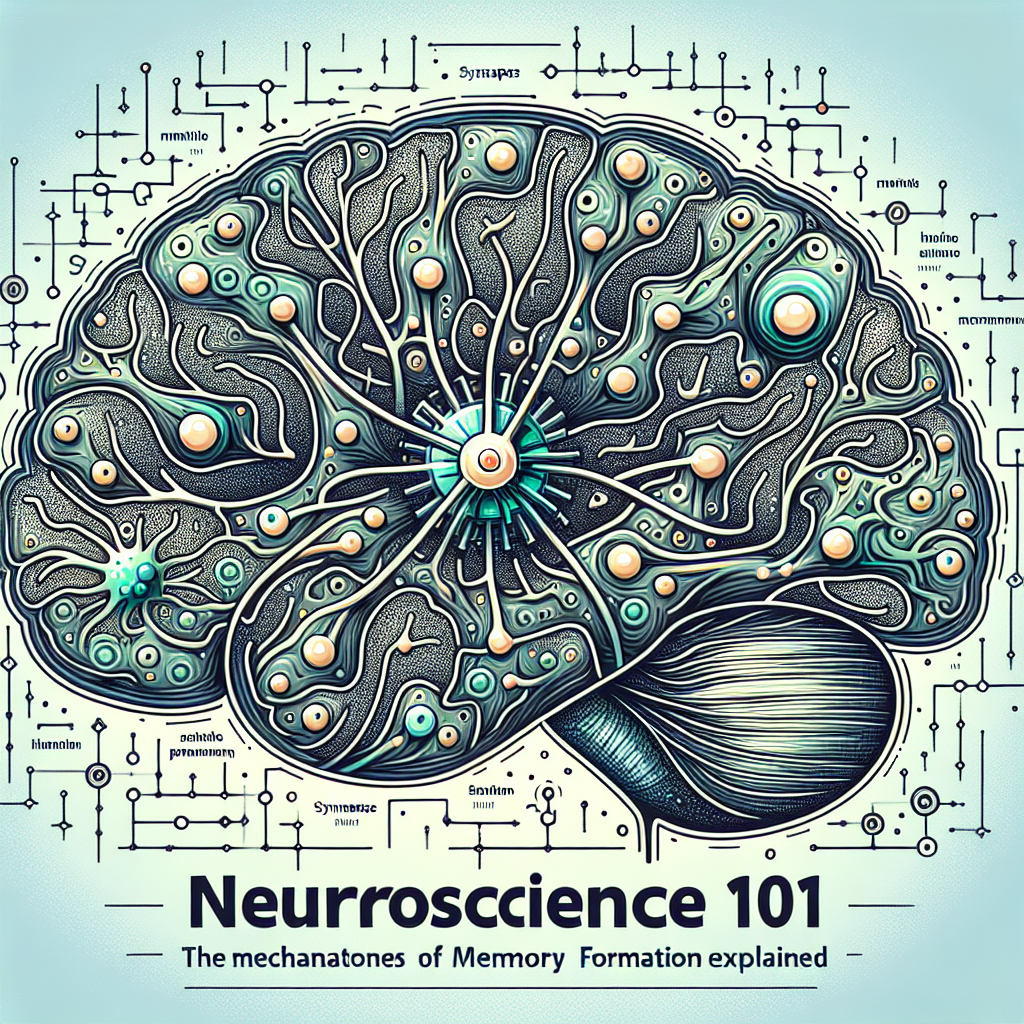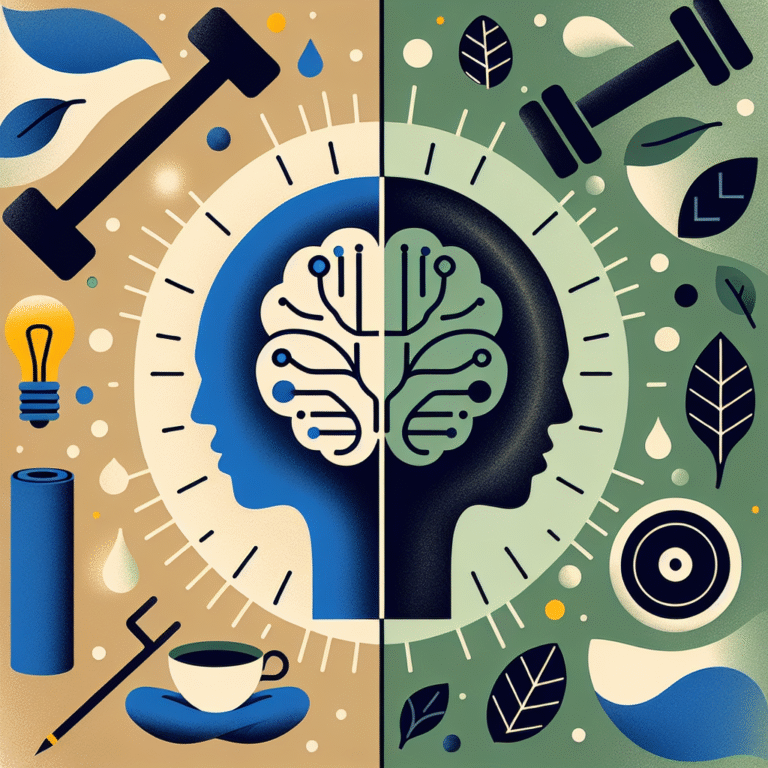
Introduction
Imagine trying to recall your first day at school, the smell of your favorite dish cooking in your childhood kitchen, or the feeling of joy as you celebrated a special occasion. Our memories shape who we are, influencing our decisions and interactions daily. The brain’s ability to store and retrieve information is nothing short of miraculous, yet many people remain unaware of the intricate processes behind memory formation. In this exploration of Neuroscience 101: The Mechanisms of Memory Formation Explained, we will unravel complex brain processes, demystify how memories are created, stored, and recalled, and examine practical applications in everyday life.
The Basics of Memory
What Is Memory?
Memory is more than just a storage system; it is a dynamic process involving multiple brain regions. In neuroscience, memory is often categorized into different types:
- Short-Term Memory: The temporary storage of information for brief periods.
- Long-Term Memory: The more permanent storage of information, which can be further divided into explicit (declarative) and implicit (non-declarative) memory.
How Memory Works
Neuroscience tells us that memory formation involves three main processes:
- Encoding: Transforming information into a format suitable for storage.
- Storage: Maintaining the encoded information over time.
- Retrieval: Accessing the stored information when needed.
Each of these stages plays a crucial role in how we remember past experiences, and understanding them is key to grasping Neuroscience 101: The Mechanisms of Memory Formation Explained.
The Brain’s Role in Memory Formation
Key Brain Structures
Different parts of the brain contribute to memory processing. The significant structures involved include:
- Hippocampus: Critical for the formation of new memories.
- Amygdala: Plays a vital role in emotional memories.
- Cerebellum: Involved in procedural memory, such as riding a bike.
Neural Pathways and Synapses
Memory formation occurs at a micro-level through complex pathways and synapses. When we learn something new, synaptic changes happen within neurons, a process known as long-term potentiation (LTP). LTP strengthens the connections between neurons, enhancing communication and information retention.
Case Study: The London Taxi Drivers
A fascinating study conducted on London taxi drivers, who undergo extensive training to memorize the city’s layout, revealed that their hippocampi were larger than those of non-taxi drivers. This demonstrates the brain’s remarkable ability to adapt and change in response to experience—a concept known as neuroplasticity. This case study illustrates how real-life experiences lead to tangible changes in the brain, supporting points from Neuroscience 101: The Mechanisms of Memory Formation Explained.
| Brain Structure | Function | Memory Type Involved |
|---|---|---|
| Hippocampus | Memory formation | Explicit Memory |
| Amygdala | Emotional responses | Implicit Memory |
| Cerebellum | Procedural skills | Implicit Memory |
The Process of Memory Formation
Encoding: The First Step
Encoding is the process of converting sensory information into a form that can be stored in the brain. It can occur through various means:
- Visual Encoding: Processing images and visual input.
- Acoustic Encoding: Involves auditory inputs, such as sounds and words.
- Semantic Encoding: Relates to the meaning of the information.
Understanding these different methods is fundamental in Neuroscience 101: The Mechanisms of Memory Formation Explained, as they highlight how creativity and sensory experiences can enhance memory retention.
Storage: Keeping Memories Safe
Once information is encoded, it moves to the storage phase. Long-term potentiation plays a critical role here, as does the process of consolidation—where memories become stable over time. This stage can also be influenced by factors like:
- Sleep: Essential for memory consolidation, especially during REM sleep.
- Repetition: Revisiting information strengthens neural connections and aids retention.
Retrieval: The Key to Accessing Memories
Retrieval is the final step in memory formation, and it can be influenced by various factors, including context and cues. Two main types of retrieval exist:
- Recall: The ability to bring information to mind without cues.
- Recognition: Identifying previously learned information from a list of options.
A well-known experiment by psychologist Elizabeth Loftus revealed how retrieval can be influenced by external factors, such as leading questions. Aspects of this study provide a cautionary tale about the fallibility of memory, reinforcing the insights in Neuroscience 101: The Mechanisms of Memory Formation Explained.
Factors Affecting Memory Formation
Emotional Influence
Emotions are powerful catalysts for memories. Emotional experiences tend to be remembered more vividly due to the involvement of the amygdala, which enhances the encoding process for memories tied to strong feelings. This explains why certain moments remain etched in our minds far clearer than mundane everyday events.
The Role of Stress
Stress can severely impact memory formation. High levels of cortisol (the stress hormone) can hinder the function of the hippocampus, making it difficult to form and retrieve memories. Conversely, mild levels of stress can enhance memory by increasing alertness and focus.
Nutrition and Memory
Research shows that certain nutrients, such as Omega-3 fatty acids and antioxidants, can support brain health and memory. A balanced diet rich in fruits, vegetables, and whole grains can enhance cognitive functions, including memory retention.
Practical Applications of Memory Science
Improving Memory Techniques
Understanding the mechanisms of memory allows us to develop effective strategies for enhancing our memory:
- Mnemonic Devices: Use visual imagery or acronyms to aid recall.
- Spaced Repetition: Spacing out study sessions is more effective for retention than cramming.
- Mind Mapping: Organizing information visually can help connect dots and aid retention.
Memory in Education
Educators can leverage neuroscience insights to develop teaching methods that enhance memory formation in students. Techniques such as integrating emotions in teaching, utilizing active learning, and providing timely feedback can significantly improve retention.
Therapeutic Uses
Understanding memory formation has significant implications in therapeutic settings. Techniques such as Cognitive Behavioral Therapy (CBT) utilize principles of memory science to help individuals confront and reshape harmful memories and beliefs.
Conclusion
The landscape of memory formation is as complex as it is fascinating. In this journey through Neuroscience 101: The Mechanisms of Memory Formation Explained, we’ve traversed fundamental processes, examined real-world implications, and unearthed how our brain encodes, stores, and retrieves memories.
Understanding these mechanisms not only deepens our appreciation for the human experience but also provides us with actionable insights to improve our memory in practical ways. Embrace these learnings, as enhancing your memory isn’t just about recalling facts—it’s about enriching your life and the connections within it.
FAQs
1. What are the different types of memory?
Memory can be categorized as short-term, long-term, explicit and implicit, with each type playing a unique role in our cognitive functions.
2. How does sleep affect memory consolidation?
Sleep is essential for memory consolidation; it strengthens neural connections made during learning and helps in filing away information for later retrieval.
3. How can I improve my memory?
Techniques such as mnemonic devices, spaced repetition, and active engagement in learning can significantly enhance memory retention.
4. What impact does stress have on memory?
High stress can impair memory formation due to elevated cortisol levels, but mild stress can sometimes enhance focus and alertness, benefiting memory.
5. Are there foods that can boost memory?
Yes, diets rich in Omega-3 fatty acids, antioxidants, and vitamins are beneficial for brain health and cognitive functions, helping to improve memory.
By understanding the fundamentals of memory through the lens of neuroscience, we can harness this knowledge to enrich our daily lives, learning experiences, and emotional connections. The journey of memory is not only about remembering the past; it’s about shaping our future.
















